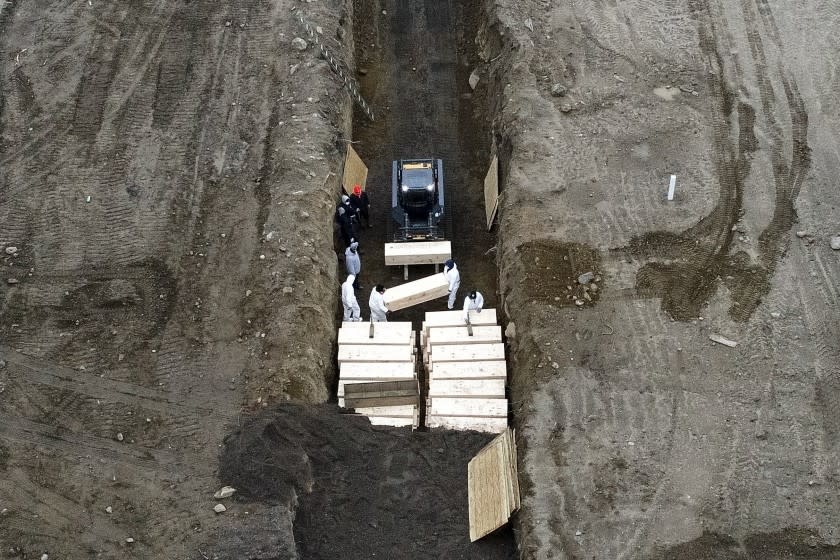Editorial: The price of underestimating COVID: 500,000 dead

In late March 2020, two of the federal government's top health experts, Drs. Anthony Fauci and Deborah Birx, delivered a stark assessment about the potential for catastrophic loss of life in the U.S. from COVID-19. Even with lockdowns and social distancing, they warned during a public briefing of the coronavirus task force, between 100,000 and 240,000 people may die before the virus waned or was vanquished.
It was an eye-popping number at the time — there had been only about a dozen reported COVID deaths on U.S. soil, and the president had dismissed the coronavirus as nothing more serious than seasonal influenza. The announcement seemed hyperbolic and perhaps calculated to shock a still-complacent public into accepting that business and school closures were truly necessary. Surely, the worst-case scenario of a quarter a million people dead was unlikely in such a scientifically and medically advanced nation. Surely.
This was just one way that Americans underestimated the virus, and it wasn't the last. And the cost turned out to be much higher than most Americans could have even imagined.
This week, the official U.S. death toll for COVID-19 surpassed a half a million people — more than any other country — and is still rising every day, though happily at a slower pace than last month. In California, about 50,000 people have died, with 20,000 in Los Angeles County alone.
It's a staggering loss of life by any measure; 500,000 deaths is the equivalent of the entire city of Miami wiped out, plus a good chunk of neighboring Miami Beach. It's also probably an undercount, given the documented underreporting of COVID deaths in several jurisdictions.
One sobering measure of the pandemic’s toll is that U.S. life expectancy fell by a full year in the first half of 2020, from 78.8 years to 77.8 years — and worse still for Black and Latino Americans. Such a precipitous drop is unusual, though average lifespans had been decreasing slightly in the preceding years due to the surge in opioid-related deaths. And the figure may rebound next year, after most Americans are vaccinated. But that's another thing we can't predict. One of the perplexing aspects of the virus is how it appears to continue causing health problems months later for those who recovered from their initial infection.
President Biden on Monday ordered flags to be flown at half-staff on federal land in honor of those who died from COVID-19, then was slated to speak at a candle-lighting ceremony Monday night. It's appropriate to remember the dead at tragic milestones such as this one to keep from normalizing the loss and forgetting why all those tiring pandemic precautions are still necessary.
This story originally appeared in Los Angeles Times.

